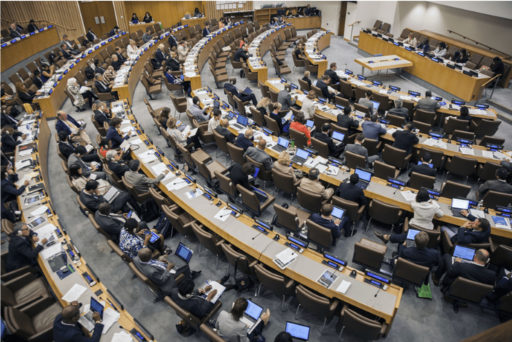High Seas – Out of sight, but on track
- January 18, 2021
- High Seas, Research, Atlantic Ocean, Pacific Ocean, Fishing
- Albatrosses, Auks & Phalaropes, Gadfly Petrels, Large Petrels & Shearwaters, Penguins, Skuas, Terns
The high seas occupy approximately half of the planet. Yet, we know much less about this vast part of the ocean than any other area of the globe. The high seas are also poorly protected because there is no global regulatory framework for conservation or even sustainable use of natural resources in his area.

Fortunately, a new international agreement for the conservation and sustainable use of marine biodiversity in areas beyond national jurisdictions (also known as the high seas treaty) is being negotiated under the United Nations Convention on the Law of the Sea (UNCLOS).
BirdLife is working to generate the evidence needed to inform negotiations of the high seas treaty to promote actions for a healthy ocean environment, and data on seabirds are key pieces of this jigsaw.
With the seabird tracking data shared by more than 200 scientists, BirdLife has been able to map the space use patterns of the high seas by migratory seabirds, and identify key sites for their protection (i.e. marine IBAs)
These studies are fundamental to understand when protected areas and/or other management measures are best suited to address seabird’s conservation needs. BirdLife has translated this scientific knowledge into meaningful advocacy messages and shared them with decision makers and other stakeholders.
Our analysis shows that we need to protect key sites alongside promoting sustainable use in the remainder of the high seas for migratory species to thrive. Therefore, we advocate for the new high seas treaty to cover these complementary conservation and management measures: allow the establishment of a coherent network of marine protected areas, as well as collaboration and cooperation with other organizations that regulate activities in the high seas, including fisheries and shipping.
The Cory’s shearwater travels across the entire Atlantic Ocean. Conservation actions for this species – and other migratory species – are required across these vast migratory routes. Tracking data owned by Maria Dias.
Remote tracking has also shown that migratory routes of some species can span entire ocean basins, crossing national jurisdictional boundaries and areas beyond national jurisdiction. This transboundary migration indicates that we need strong international cooperation through international treaties, such as the Convention on Biological Diversity, the Convention on Migratory Species, and also the new high seas treaty.
Sooty Albatross (Phoebetria fusca)
Percentage of time spent in High Seas, per month
Source: Beal et al. (2021). Thank you to our data contributors: Azwianewi Makhado, Henri Weimerskirch, Peter Ryan, Robert Crawford, Ross Wanless, Stefan Schoombie, Steffen Oppel.